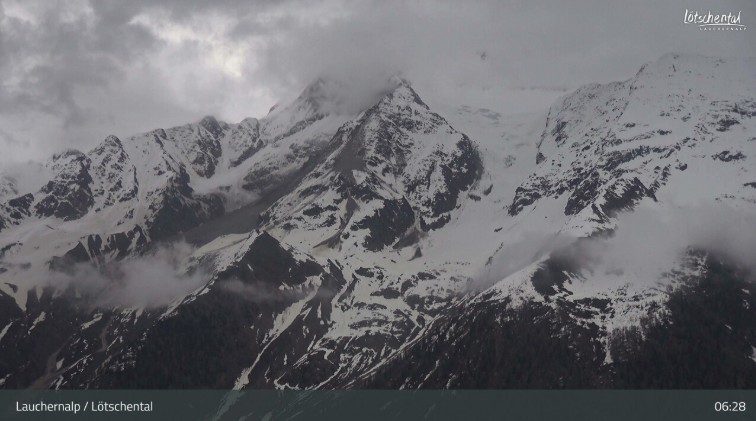Smaller rockfalls have reduced the risk of a major rock slope collapse above Blatten, but attention has shifted to the Birch Glacier, which is now moving at 10 metres per day.
The Landslide Blog is written by Dave Petley, who is widely recognised as a world leader in the study and management of landslides.
Over the last few days, the situation above Blatten in Switzerland has developed considerably. The good news is that the rock slope failure has continued to occur as a series of smaller rockfalls, rather than a single very large collapse. This has limited the runout distance of the debris, sparing, at least so far, Blatten itself.
The webcam has been difficult to use due to the cloudy weather, but the view this morning (27 May 2025) shows that the slope has evolved considerably:-

Throughout this crisis, Melaine Le Roy has provided excellent updates via his Bluesky account. Embedding Bluesky posts on Wordpress is very hit and miss, but hopefully this will work. If not, please follow the links.
Yesterday, Melaine posted an update provided by Alban Brigger in the regular press conference about the Blatten event:-
The original estimate of the potentially unstable rock slope volume was about 5 million m3, so the majority of that volume has now detached. Note also that the image shows that the failure has retrogressed to the ridgeline. Lidar data shows that this section of the mountain has lost 101 m of elevation.
Primary attention has shifted to the Birch Glacier, which is being loaded with rockfall debris. Our understanding of the dynamics of this system is far less good than for a “simple” rock slope failure, so this is highly unpredictable. The glacier has up to 81 metres of debris sitting on the surface.
Late on 26 May 2025, SRF reported that the estimated load on the glacier is 9 million tonnes and that the glacier has accelerated to a movement rate of 10 metres per day. This is a marked increase over a 24 hour period.
For reference, this was the state of the Birch Glacier on 25 May 2025:-
The first update this morning (27 May 2025) is as follows:-
“The feared collapse of the glacier did not occur last night either. Nevertheless, the situation remains unpredictable, writes Beat Kälin, the reporter on site.
“For the first time in days, the night was completely free of precipitation. The view was clear throughout. “And it was the warmest night in Blatten VS for a long time.” The thermometer did not drop below around 4 °C.
“While the large rock falls have noticeably decreased and only occur sporadically, the glacier collapses have increased significantly,” Kälin continues. The right-hand part of the glacier front was particularly active before midnight – viewed from the point of view of the village of Blatten. Shortly before 10 p.m., a major glacier collapse was registered. “Our cameras captured how a mass of ice, rock and water moved down the valley within a few minutes.” However, the material did not reach the village. In the second half of the night, break-offs were detected along the entire width of the glacier front.
“Another indication of the increasing activity of the glacier is the meltwater that flows from the glacier into the Birchbach and finally flows into the Lonza. This has now turned conspicuously brown. According to the reporter, this is an indication that larger quantities of bedload and fine material are being carried.”
It is simply not possible to say with any certainty what happens next at this site. Will the glacier continue to move as at present, generating collapses at the front? Or will it slow down? Or will it collapse, generating a significant flow? Or will a larger failure on the rock slope suddenly increase the load on the glacier, changing its behaviour?
Blatten itself remains evacuated and there is intense monitoring of the site.
Finally, there is some excellent footage of the collapses occurring above Blatten, posted by RTS Info to Youtube:-


